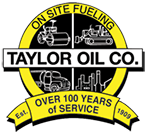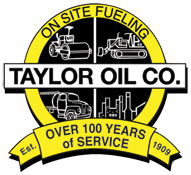If you own a fleet of trucks and are responsible for training many drivers, you may assume that offering as much training as possible is the best option. After all, more is better, right? Not always. Let’s talk about: how much training is too much? Well, there is a thing as too much driver training, as it can lose its effectiveness over time.
This situation typically arises when fleets are holding required monthly training assignments for their drivers. Many fleet owners are assigning a block of training each month, with a requirement that drivers must complete the training by the end of the month.
It’s actually counter-productive to assign safety training for drivers every month. In fact, it’s not very effective when you want to improve driver knowledge, fleet safety, or workplace culture. Why is that? Well, you can’t just dump a bunch of info in their laps and walk away. You have to take time to review that content, adjust any plans, work on gaps, and ensure that drivers follow through.
To ensure training is most effective, you have to determine the effect over time and make crucial decisions based on what you see. If the training gave you positive results and solved a problem, that’s great. But if you didn’t notice any significant results, you may want to scale back on your training or switch up how you deliver it.
Another thing to consider is that everyone develops at a different pace. Some people crave learning something new each month, while others need more time to assimilate new knowledge and skills. In that case, throwing monthly assignments at them doesn’t allow them to do that.
Monthly training can also become a chore if it’s done too much, and you may get pushback from all your drivers.
What’s a Better Approach?
The way in which you structure your ongoing safety improvement program that actually gives you positive results is the key. You need it to be more dynamic, while still being manageable enough to develop and deliver solutions.
First off, refer to it as a monthly activity rather than monthly training. Just phrasing it this way will ensure it is more well-received by staff. And it also sounds more interactive rather than just a boring classroom setting.
You could begin with a quarterly cycle of monthly activities that focus on a specific topic. Here’s an example of how you can structure your training:
- Month 1 – Training assignment as part of a traditional online course, perhaps a half hour to complete
- Month 2 – Collect feedback from drivers on their experiences related to the topic they just learned about. The key is to gather real-world examples, perhaps through a survey.
- Month 3 – Create custom content that relates to the topic, perhaps a video that recaps the feedback you got in the second month.
You could switch things up, too. Perhaps you could add a live event one month, or send out a YouTube video relating to the subject. Maybe you could ask drivers to post pictures related to the training topic on Facebook. Make it a contest with the winner getting some kind of incentive or reward.
By diversifying your training programs, you’re doing more to engage your drivers so they can become actively involved rather than just “talked at.”
Contact Taylor Oil
Here at Taylor Oil, all of our drivers are trained regularly to offer you the speedy, efficient and safe service you have come to expect from a leader in fuel delivery in the Northeast! To find out more, contact us today.


